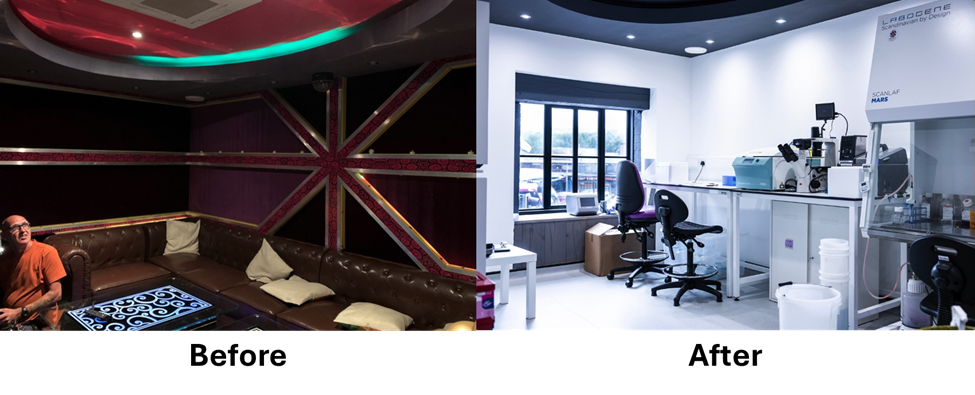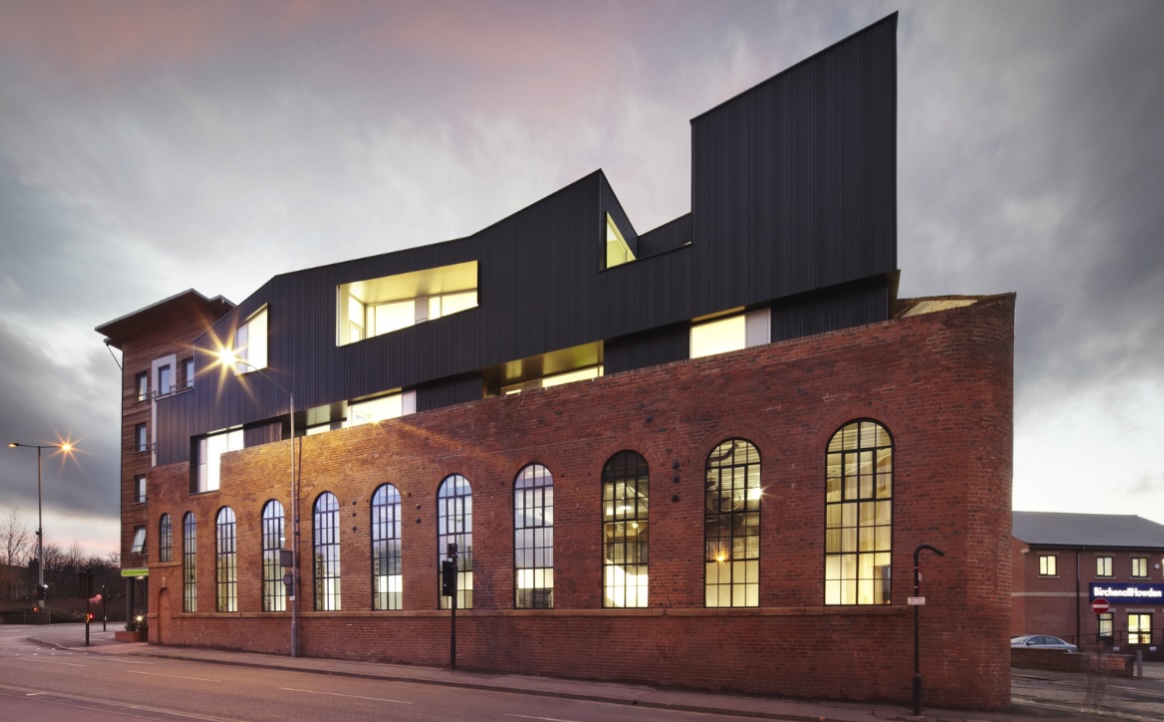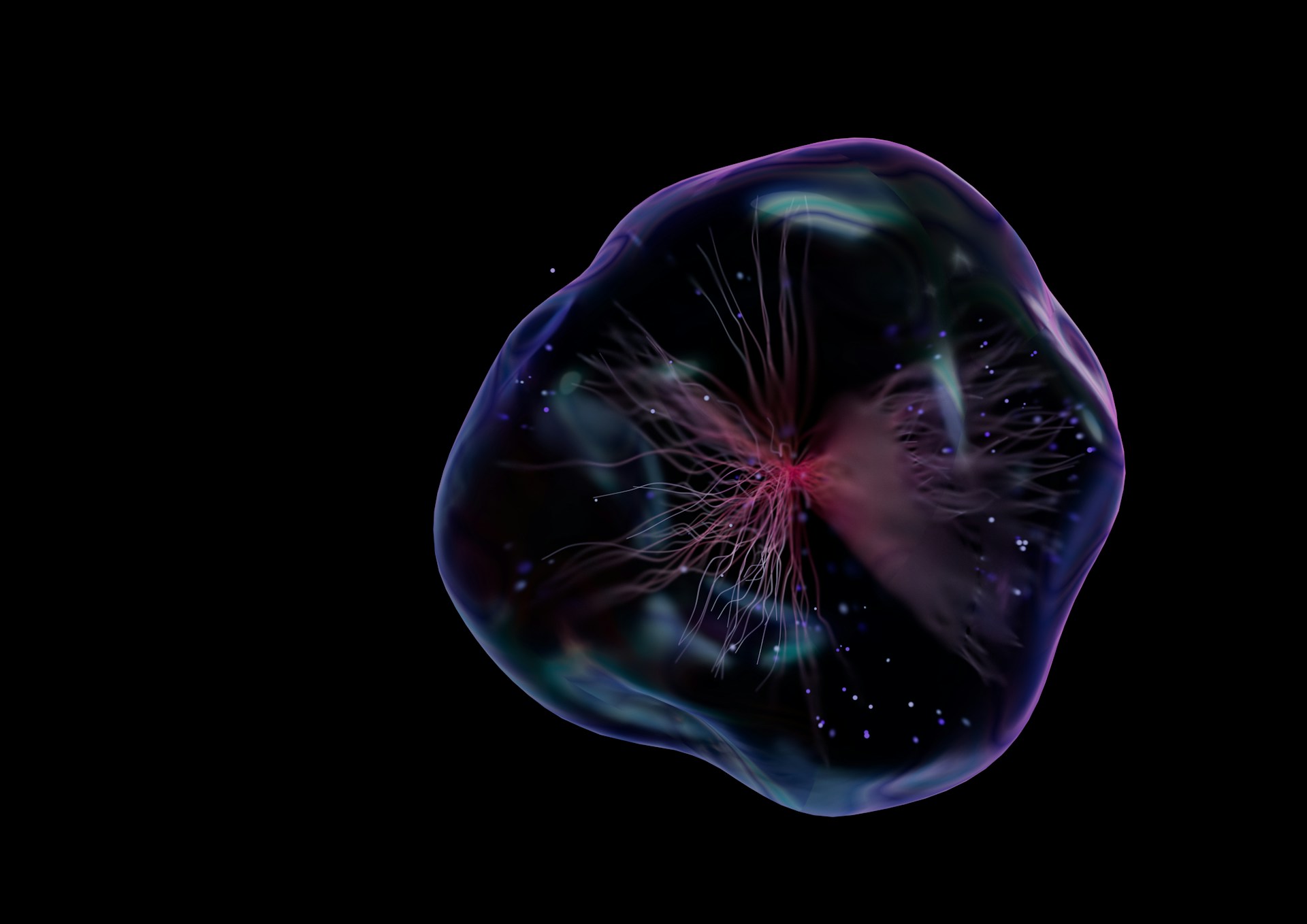Introduction
T-flask cultures are the most common type of monolayer-based cell culture that a researcher works with. Yet there remain few ways to automate the preparation, culturing, and harvesting of these cells.
Adam Glen (AG) and Jack Reid (JR), co-founders of Unicorn Biotechnologies, have something to say about that. They even so far as to convert a nightclub into a lab to make their voice heard.
They’re bringing out their newest friend, Emmet. Emmet is Unicorn Biotechnologies’ first product, a benchtop-sized robotics machine that can automate T-flask cell culture workflows. With it, they’re removing challenges to scale up drug discovery and preclinical development efforts.
Read on to learn more about Emmet and consider adding it to your preclinical drug development efforts. You’ll also hear their unconventional path to finding a lab space at the heart of Sheffield, UK.
The Interview
Moving into a new facility: an unlikely source
PN: So, I hear that you set your home base at a night club. How did that happen?
JR: We are based in Sheffield. In the UK, Sheffield is often associated with steel and manufacturing. Sheffield has never been a biotech hub by any stretch of the word. But we managed to start out at a local coworking space. It was great for our initial operations, but we were growing rapidly. We needed a building with wider doors and room for hoods, incubators, and any other lab equipment we were going to bring in.
PN: That sounds like a long list of needs.
JR: We listed all our needs on a spreadsheet. At times, we wondered whether we would ever find the space we needed. We were in the market for over six months. But that was when we encountered a nightclub six blocks down from where we began operations. Although it was a commercial establishment, it met our needs completely (Figure 1). We then met with the landlord to see whether we could convert the building into a lab space.

PN: What was his reaction?
JR: We were expecting the worst. Surprisingly enough, the landlord shrugged. He was interested in biotechnology, and the initial reaction was, ‘as long as you pay your rent on time, and you can move in quickly, it will work out [sic]’.
PN: Were there any complications with the city about what you were going to do with the space?
JR: There were certainly a few complications. We had to do all the legwork ourselves and the council wasn’t helpful with the process at all. Nonetheless,
The permits for laboratory spaces and commercial nightclubs were surprisingly adjacent to each other. The paperwork was completed in just a month.
AG: To add, before it was a nightclub, it was deeply involved with the steel industry; the building was used to repair horses and carriages. When the city learned of our intentions, they were happy to change its function away from a less-than-reputable one to one that made biomedical research possible.
PN: What advice would you give to others who wish to replicate what you’re doing, given the industry’s struggles with limited lab space?
AG: If you’re a lab that needs to meet good manufacturing practices (GMPs), I wouldn’t necessarily recommend following our approach. Our labs didn’t require GMP since we were developing machinery and performing research (non-cGMP) biological R&D. The other piece of advice we have is that there might be more opportunities to repurpose nightclubs into laboratory spaces. Alcohol consumption is going down across the UK, and more broadly in Europe and the US. When you give others an opportunity to remake a less-used space into something that drives research and innovation, people welcome it.
The challenge with cell culture today
PN: Since moving into your new facilities, you were able to develop the Emmet for automating cell culture preparations that use T-flasks. What are T-flask cultures and how do you prepare them?
AG: T-flasks are a standard vessel for culturing mammalian cells. In a flask, we would add reagents called media to provide the environment that cells need to grow. These include sugars, proteins, and other essential molecules. Then, the cells would be placed in an incubator to allow them to grow.
However, that’s only the beginning of the work to be done. After seeding, you have to treat the cells like pets and children. You must remove their waste, add fresh nutrients for them to eat, and ensure that nothing foreign, whether living or not, enters their culture. This constant monitoring leaves cell culture scientists chained to the bench all week, even on weekends.
PN: I can attest to how tiring that work can be. How does keeping it manual affect productivity and experimental results?
AG: Mammalian cells are highly sensitive systems. Even the slightest changes in environmental conditions, the speed at which media is changed, the timing of fluid exchanges, and the angle at which a flask is manipulated can perturb the cells. Such disturbances can affect how the cells appear, even to the point of experimental failure.
When you combine that with how you’re forced to stay in the lab to monitor your cultures, you create two massive challenges in cell culturing: reproducibility and scalability. First, with such variable workflows, it is challenging, and in some cases, impossible to replicate a manual cell culture workflow between labs, making it difficult to validate research findings. Secondly, scaling these workflows often requires large teams of PhD-level scientists, facilities, and overheads, as well as inefficient processes with high batch failures. All of which contribute to sky-high manufacturing costs. For therapeutics like regenerative medicines, which are based on living cells, this is a significant roadblock towards mass market entry.
While attempts have been made to automate cell culture workflows, there is no industry-wide, commonly accepted tool, technology, or system that achieves this goal. Today, cell culture remains a highly variable, artisanal, and non-industrialized process.
PN: You have a particular example that highlights this well within cell culturing. Could you delve into that?
AG: When you’re culturing cells, you will quickly come across the term ‘confluence.’ Confluence refers to the extent to which adherent cells cover a culture dish or flask. You don’t want the cells to cover the entire surface; overgrowing your cultures this way causes the cells to die. Rather, you want to have the cells to cover roughly 80% of the surface. At that point, we can subculture the cells and study them further. It’s the goldilocks amount and in most cases lab users are “guestimating” when to subculture cells.
PN: The whole process of identifying confluence doesn’t seem very scientific.
JR: It’s not the definition itself, mind you. It’s how we determine the confluence that’s the issue. Most scientists will determine ‘are my cells confluent’ by visually analyzing the cells under a microscope. As you can imagine, this is highly variable. 10 scientists looking at the same image under a microscope will probably come up with 10 different estimations of ‘what percentage of the growth area in a flask are my cells covering.’ I think you can start to see how this is problematic for both reproducing experimental conditions and results, and scaling manufacturing workflows.
PN: That’s concerning, especially since confluence plays a big role in so many other experiments.
JR: You can have the fanciest sounding science and the best results from your experiments. But if the base of your pyramid is sketchy, your whole experiment becomes unreliable. Your CRISPR screens, your drug discovery efforts, and the data you input into AI for machine learning. All of that relies on confluence data that’s determined by hand or doesn’t have a widely agreed-upon definition.
A critic might reply that ‘confluence is one, relatively unimportant data point in cell culture.’ Sure, that’s not wrong. But think about what our discussion of confluence estimations represents: a highly variable (human) analysis of data in a complex production process. Almost every other type of quantifiable data generated during cell culture has similar human-based variability challenges.
Yes, there are many factors that affect how reproducible any result is, but if you can’t even produce consistent data from a foundational method like this, we’ve got a massive issue with reproducibility underneath our noses.
PN: And that’s just one factor to consider.
JR: Yes, that’s right. I’ll bring up induced pluripotent stem cells here. They are quite sensitive to mechanical forces. If you move the fluids in the cultures within the flask too quickly, you can accidentally power wash the cells. That can cause iPSCs to spontaneously differentiate or even die. Either effect will ruin the cell culture. At minimum, such a perturbation can create small behavioural changes that compound into unexpected changes in gene expression and phenotypes within the cell culture.
How the Emmet addresses challenges in T flas culturing
PN: It’s problems like these that you’re trying to solve with the Emmet. How would Emmet help with this?
AG: The Emmet system addresses several pain points and challenges that researchers have when preparing T flask cultures:
- Size: The more space a lab machine occupies, the less equipment and ergonomics a lab has for their personnel. The Emmet can fit perfectly on a benchtop. It’s only 1.2 m wide, 1.0 m tall, and 1.0 m deep.
- High throughput: The Emmet can also grow up to 18 T flasks at once. You can use those slots to facilitate passages between flasks or run multiple cell lines in parallel. Either way, our system provides a means to meet the needs of any researcher for cell culturing.
- Closed system: Our system also isolates itself from the outside environment. That means we can maintain sterility without needing a fume hood.
- Milli-fluidics: The Emmet boasts cartridges for easy setup with cartridges. We’ve seen other systems have thousands of tubes that need to be connected one by one. We wanted to make the setup process easier with fewer tubes that can carry mL-sized volumes. That minimizes the human input required to install the Emmet.
- Intricate monitoring: An Emmet system can be equipped with in-line metabolic sensors if desired. These could include glucose, lactate, dissolved oxygen, and CO2 (and by extension, pH) among others. In-line metabolic or biochemical-based sensing systems provide a robust and quantitative method for measuring cell states and informing process decisions to keep cells in their ideal growth conditions.
All in all, Emmet can support any T-flask-based culture workflow, including both anchorage-dependent and suspension-adapted cell cultures.
PN: That’s a lot of advantages you’ve already offered so quickly for such a foundational technique in cell culture. What are you hoping to refine next as you seek to further automate the cell culture process?
JR: Three things come to mind as we continue to develop the Emmet for commercialization:
First, the elephant in the room for any bioproduction system is tubes. Setting up a fluid manifold and forming aseptic fluid pathways is both time-consuming and prone to human error and contamination. While Emmet is easy to set up today, we are working on additional subsystems (e.g., an autonomous method to make or break aseptic connections) that will make Emmet even easier and more robust.
Second, we would like to move Emmet, and the entire cell culture field, toward qualitative, biochemical-based sensing systems. While imaging and photonic detection systems are useful, they often rely on qualitative judgements and, in some cases, can be harmful to cells. Especially sensitive cell types, such as pluripotent stem cells. While Emmet has an autonomous, onboard brightfield imaging system, as well as a cell count and confluence estimation system, we hope that more researchers will begin using metabolic sensing and secreted marker detection systems as indicators of cell states – e.g., confluence.
Finally, leveraging machine intelligence is critical for both ensuring robust analytical operations and process control. Machine intelligence – both machine learning and LLM-based AI approaches – are powerful tools that can be used to automate analytical data analysis (e.g., estimating confluence). These analyses are then fed into an ‘adaptive’ process control system which can then modulate machine actions, environmental conditions, etc. to keep cells in optimal conditions (e.g. if cells are growing fast and are ready to passage at 2:30 am on a Saturday, Emmet can perform that passage without needing a person to tell it what to do).
Author
-

Paul Naphtali is a seasoned online marketing consultant. He brings to the table three years of online marketing and copywriting experience within the life sciences industry. His MSc and PhD experience also provides him with the acumen to understand complex literature and translate it to any audience. This way, he can fulfill his passion for sharing the beauty of biomedical research and inspiring action from his readers.
View all posts




